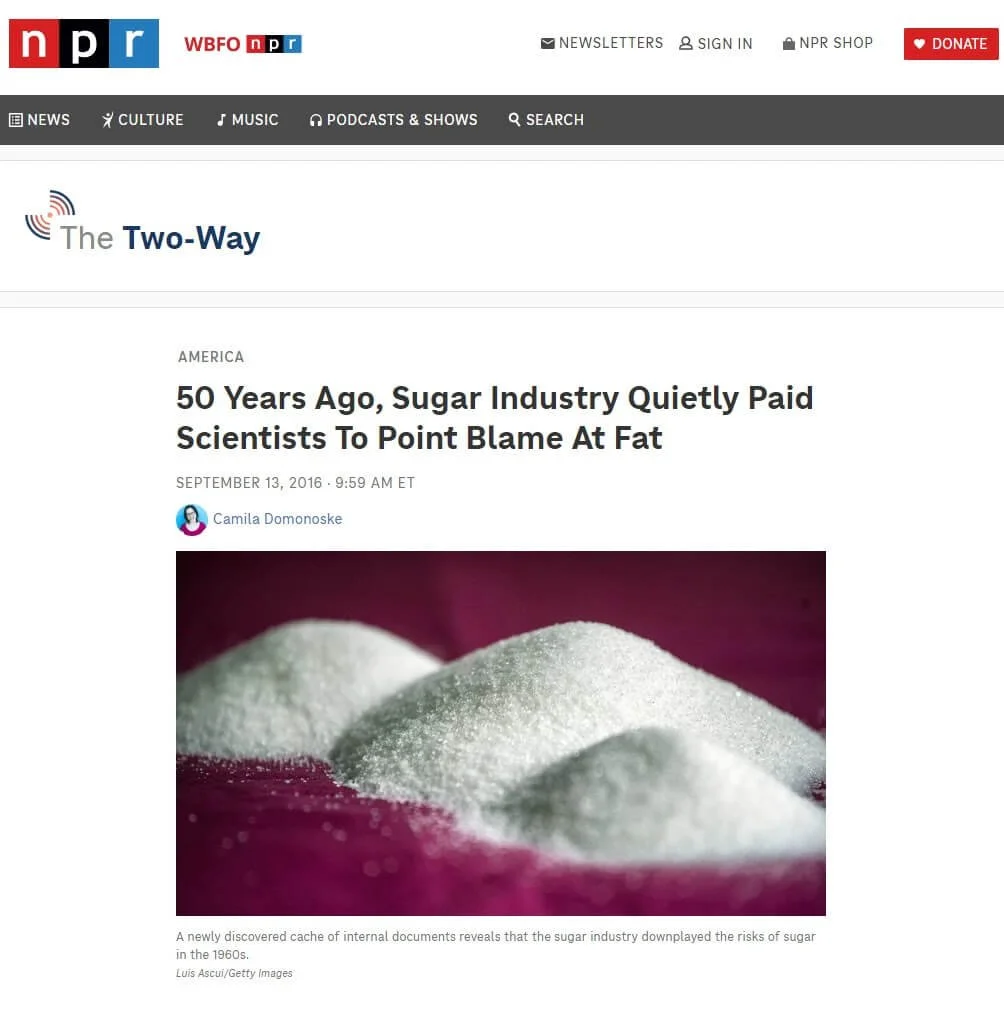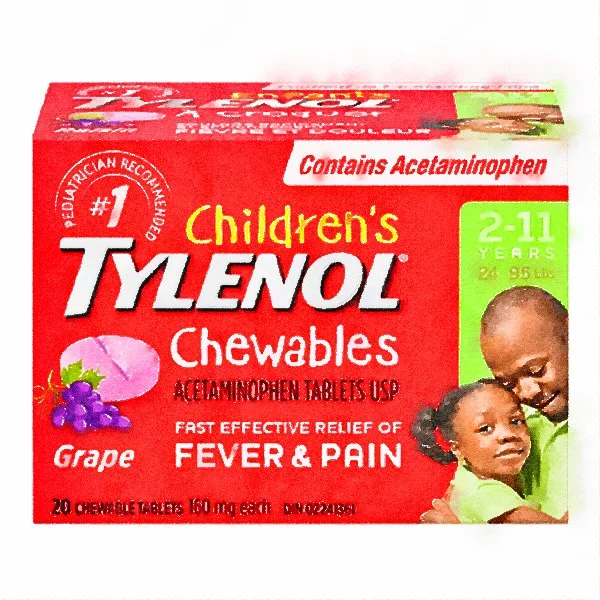Scientists Paid to Avoid Blaming Sugar for Health Problems
The $50,000 Lie: How Big Sugar Bought Harvard Science and Still Shapes What You Eat Today
A Halloween story scarier than any candy corn
In 1967, three Harvard scientists published a review in one of the world's most prestigious medical journals that would shape American eating habits for the next half-century. Their conclusion was definitive: there was "no doubt" that the only dietary change needed to prevent heart disease was to reduce fat and cholesterol. Sugar? Not a concern.
What they didn't disclose: the Sugar Research Foundation had paid them the equivalent of $48,900 in today's dollars to reach exactly that conclusion.
This isn't a conspiracy theory. It's documented fact, revealed in 2016 when a dentist-turned-researcher named Cristin Kearns discovered over 1,500 pages of internal industry documents gathering dust in a Harvard library basement. The story that emerged is a masterclass in how corporate money can corrupt science—and why we're still living with the consequences every time we reach for a "heart healthy" cereal box or low-fat yogurt loaded with sugar.
The Setup: A Strategic Opportunity
The story begins in 1954, when the Sugar Research Foundation president gave a revealing speech to sugar beet technologists. He'd identified what he called a "strategic opportunity": if Americans could be convinced to eat less fat for their health, they'd need to replace those calories with something else. Sugar consumption, he calculated, could increase by more than a third.
The foundation committed $600,000 (over $5 million in today's dollars) to a campaign teaching people "that sugar is what keeps every human being alive and with energy to face our daily problems."
But by the early 1960s, a problem emerged. Scientists were publishing research linking sugar—specifically sucrose—to elevated cholesterol, elevated triglycerides, and coronary heart disease. British physiologist John Yudkin was making a compelling case that sugar, not fat, was the primary dietary culprit in heart disease.
The sugar industry needed a response.
The Plan: "Refute Our Detractors"
In December 1964, the Sugar Research Foundation's vice president, John Hickson, laid out a strategy in an internal memo. He noted with concern that "from a number of laboratories of greater or lesser repute, there are flowing reports that sugar is a less desirable dietary source of calories than other carbohydrates."
His proposed solution was elegant in its cynicism: "We should carefully review the reports, probably with a committee of nutrition specialists; see what weak points there are in the experimentation, and replicate the studies with appropriate corrections. Then we can publish the data and refute our detractors."
In July 1965, just days after the New York Herald Tribune ran a full-page article on new research strengthening the case that sugar increased heart attack risk, the foundation approved "Project 226"—a literature review to be conducted by Harvard researchers.
The Scientists: Prestigious and Compromised
The Sugar Research Foundation recruited Dr. Fredrick Stare, chair of Harvard's Public Health Nutrition Department, to join their scientific advisory board. Stare was a nutrition superstar—consulted by the National Academy of Sciences, the National Heart Institute, and the American Heart Association. His endorsement would carry weight.
Stare brought in two colleagues: Dr. D. Mark Hegsted and Dr. Robert McGandy. Together, they would review the scientific literature on sugar, fat, and heart disease. The foundation would pay them $6,500—split among the three, with Hegsted initially offered $500 and McGandy $1,000, though the final division isn't clear from surviving documents.
The payment structure was telling: half upfront, "and the remainder when you inform me that the article has been accepted for publication."
The Process: Industry Direction, Academic Execution
What happened next reveals how subtle scientific corruption can be. The Sugar Research Foundation didn't need to write the paper themselves or falsify data. They simply needed to:
Set the objective clearly: Hickson told Hegsted their "particular interest had to do with that part of nutrition in which there are claims that carbohydrates in the form of sucrose make an inordinate contribution to the metabolic condition." He added: "I will be disappointed if this aspect is drowned out in a cascade of review and general interpretation."
Select which studies to review: Hickson provided the articles he wanted examined—most containing findings that threatened sugar sales, signaling they expected critique.
Review drafts: Correspondence shows Hickson asking Hegsted, "Am I going to get another copy of the draft shortly?" suggesting ongoing involvement in the writing process.
Approve the final product: Upon receiving the last draft, Hickson wrote: "Let me assure you this is quite what we had in mind and we look forward to its appearance in print."
At one point, Hegsted wrote to the foundation explaining delays: "Every time the Iowa group publishes a paper we have to rework a section in rebuttal." The word choice is revealing—not "revision" or "update," but "rebuttal." They saw their role as refuting inconvenient science, not objectively evaluating all evidence.
The Double Standard: Rigor for Sugar, Free Pass for Fat
The 2016 analysis by UCSF researchers identified the review's key manipulation: it applied wildly different standards of evidence depending on what was being evaluated.
When examining studies linking sugar to heart disease, the Harvard researchers:
Dismissed epidemiological studies as too confounded by multiple factors
Rejected experimental studies using high sugar doses as unrealistic
Discounted animal studies due to species differences
Questioned the relevance of studies on fructose or glucose (components of sucrose) rather than sucrose itself
Criticized studies for investigator incompetence or flawed methodology
When examining studies linking fat to heart disease, the Harvard researchers:
Accepted epidemiological evidence without the same concerns about confounding
Reported "few study characteristics and no quantitative results"
Overlooked that only one randomized trial (conducted by Hegsted himself) showed the claimed benefits
Ignored that cited clinical studies "were not well controlled"
Dismissed the lack of mechanistic evidence as "unimportant"
This double standard was the heart of the deception. As Stanton Glantz, one of the UCSF researchers who uncovered the documents, explained: "Anything that was written against sugar was hyper-critical while research against fat had a free pass."
The Conclusion: False Certainty
The two-part review was published in the New England Journal of Medicine in 1967. Its conclusion was unequivocal: there was "no doubt" that the only dietary intervention required to prevent coronary heart disease was to reduce dietary cholesterol and substitute polyunsaturated fat for saturated fat in the American diet.
Sugar's role? Essentially dismissed.
The funding source? Never disclosed. The New England Journal of Medicine didn't require conflict-of-interest disclosures until 1984—seventeen years too late.
The Impact: Decades of Misdirection
The effects of this industry-funded review rippled forward for decades:
1980 - First U.S. Dietary Guidelines: Focused almost entirely on reducing fat, saturated fat, and cholesterol for heart health. Sugar was mentioned only because "the major health hazard from eating too much sugar is tooth decay"—not heart disease.
The Low-Fat Era: Food manufacturers reformulated thousands of products to be low-fat or fat-free. To maintain palatability, they added sugar. "Heart healthy" labels appeared on sugary cereals because they were low in fat.
Research Priorities: Funding and scientific attention focused overwhelmingly on the fat-heart disease connection. Questions about sugar were sidelined.
Public Confusion: By successfully muddying the science, the sugar industry created lasting uncertainty. Even today, debates about sugar's role in heart disease continue, while fat has been partially rehabilitated in public perception.
Health Outcomes: American sugar consumption increased dramatically during the low-fat era. Today, about 610,000 Americans die annually from heart disease—it remains the leading cause of death. Obesity rates have skyrocketed: childhood obesity more than doubled, adolescent obesity quadrupled since the 1970s. About a third of Americans now have non-alcoholic fatty liver disease, with heavy sugar consumption as a main risk factor.
What We Know Now: The Evidence Mounts
By 2016, when the documents were revealed, the scientific landscape had shifted considerably:
A 2015 study found that diets high in added sugars can cause a three-fold increase in risk of death due to heart disease
Research has established links between added sugars and hypertension, elevated triglycerides, and cardiovascular disease broadly
Some scientists now argue that added sugars may be more of a risk factor for coronary heart disease than saturated fats
Yet health policy remains inconsistent. While the latest U.S. dietary guidelines finally put a limit on sugar (10% of daily calories), and the American Heart Association recommends children consume no more than 6 teaspoons (about 24 grams) of added sugar daily, many policy documents still don't explicitly cite heart disease risk as a consequence of sugar consumption.
Why Aren't We Angrier?
The 2016 revelations appeared in major outlets—CNN, NPR, The Guardian, ABC News, PBS. Yet most Americans remain unaware of this documented case of corporate corruption of science.
Several factors explain the muted response:
Legal at the Time: Because conflict-of-interest disclosure wasn't required in 1967, what the sugar industry did wasn't technically illegal—just unethical.
Everyone Is Dead: The three Harvard scientists and the sugar industry executives involved had all passed away by 2016. There was no one to hold accountable, no dramatic courtroom confrontation.
Ongoing Industry Tactics: When industries routinely fund favorable research (as Coca-Cola did with exercise studies in 2015, and candy makers did with studies on children's weight), individual historical cases get lost in the noise.
Scientific Complexity: The sugar industry can still claim there's "debate" about sugar's role in heart disease specifically (as opposed to cardiovascular disease broadly), creating just enough ambiguity to avoid clear regulatory action.
The 17-Year Lag: Research shows it takes an average of 17 years for medical knowledge to translate into standard practice. The documents were revealed in 2016—we're only halfway through the expected timeline for full integration into policy and practice.
The Playbook: Not Just Sugar
What makes this story particularly chilling is how it parallels other industries' manipulation of science. Stanton Glantz, who uncovered the sugar documents, is a veteran of studying the tobacco industry. His assessment: "It's all the same tricks."
The formula:
Fund research with predetermined conclusions
Hand-select which studies to review
Apply double standards to evidence
Emphasize uncertainty and demand impossible proof
Promote alternative explanations
Cultivate relationships with prestigious academic researchers
Avoid direct fingerprints on the final product
The tobacco industry used this approach to delay regulation for decades. The fossil fuel industry has used it to create doubt about climate change. The pharmaceutical industry has used it to downplay addiction risks. And the food industry—not just sugar, but also processed foods, sodas, and more—continues using these tactics today.
What's Still on Your Shelf: The Lasting Legacy
Walk down any supermarket aisle and you'll see the legacy of the sugar industry's 1960s strategy:
"Heart Healthy" cereals containing 11 grams of sugar per serving (half a child's daily limit)
Low-fat yogurt with 20+ grams of added sugar
Granola bars marketed as wholesome with more sugar than a candy bar
Smoothies and juices with 30-50 grams of sugar labeled as healthy
Sports drinks with 56 grams of sugar marketed to active children
A single 20-ounce Coca-Cola contains 65 grams of sugar—more than 2.5 times the American Heart Association's recommended daily limit for children. Yet many parents worry more about fat content than sugar when making food choices, a direct legacy of the misdirection that began in 1967.
The Current Battle: Industry Pushback Continues
When the 2016 study was published, the Sugar Association issued a defensive statement claiming it's "challenging for us to comment on events that allegedly occurred 60 years ago, and on documents we have never seen."
But then they added the key line: "The last several decades of research have concluded that sugar does not have a unique role in heart disease."
Notice the specific phrasing: "does not have a unique role." This carefully chosen language allows them to acknowledge that sugar may contribute to heart disease (through obesity, diabetes, hypertension) while denying it has an independent, direct effect. It's the same strategy from the 1960s—not defending sugar outright, but creating just enough scientific ambiguity to prevent decisive regulatory action.
The association also accused the JAMA study authors of having an "anti-sugar narrative" and using "headline-baiting articles to trump quality scientific research." The implication: questioning industry-funded research is somehow anti-scientific.
What Would Change Look Like?
If we took the 1960s corruption seriously, what would be different?
Product Labeling: Added sugars would be prominently displayed with daily percentage values and health warnings, similar to tobacco products.
Marketing Restrictions: Advertising sugary products to children would face significant limitations.
Reformulation Incentives: Tax structures would encourage manufacturers to reduce added sugars, not just fats.
Medical Education: Doctors would routinely counsel patients about sugar consumption's cardiovascular risks, not just its effects on weight and dental health.
Research Funding: Independent review of industry-sponsored nutrition research would be mandatory, with public disclosure of all conflicts of interest.
Dietary Guidelines: Heart disease prevention recommendations would explicitly address added sugar consumption, not primarily focus on fats.
Some of these changes are beginning to happen, but slowly. The FDA now requires "added sugars" to be listed separately on nutrition labels (as of 2020). Some cities have implemented sugar taxes on beverages. But comprehensive reform remains distant.
The Scientist Who Wouldn't Give Up
Cristin Kearns deserves recognition as the unlikely hero of this story. A dentist by training, she attended a conference on diabetes in 2007 where a keynote speaker told the audience there was no evidence linking sugar to chronic disease. She was shocked—and skeptical.
Kearns quit her dental practice and devoted herself full-time to tracking down industry documents. She now has over 2,000 pages of internal materials in two banker's boxes in her UCSF cubicle. Her previous research revealed how the sugar industry manipulated a federal dental research program in the 1970s to shift focus away from eating less sugar toward finding a vaccine for tooth decay.
When she flew to Boston in 2011 and spent days thumbing through Mark Hegsted's archived letters in the Harvard library basement, she was "shocked" by the level of cooperation between the renowned nutritionist and the sugar industry.
Kearns's persistence gave us rare, hard evidence—what Marion Nestle called a "smoking gun"—of food industry manipulation of science. Most corporate influence is subtle, untraceable, and plausibly deniable. These documents provided proof.
A Personal Note: Why This Matters for Halloween
I'm sharing this story around Halloween not to ruin anyone's trick-or-treating, but because it's the perfect moment to think about our relationship with sugar. Halloween makes visible what's usually invisible: the sheer volume of sugar in American life.
A child's Halloween haul might contain 3,000-7,000 grams of sugar—shocking when concentrated in a pillowcase, but barely different from the added sugars consumed throughout a typical year. The American Heart Association recommends children consume no more than 24 grams of added sugar daily. At that rate, a year's worth would be about 8,760 grams.
The average American child consumes far more than that—some estimates suggest 50-80 grams daily. Where does it come from? Not Halloween candy, but breakfast cereals, juice boxes, flavored milk, granola bars, fruit snacks, sports drinks, and hundreds of processed foods with added sugars.
We police the candy but miss the forest for the trees. And that's precisely what the sugar industry's 1960s strategy achieved: it made us focus on fat while sugar hid in plain sight, labeled "heart healthy" or "low fat" or "natural."
What You Can Do
Understanding this history doesn't require becoming an anti-sugar crusader or never eating dessert again. But it should inform how we evaluate nutrition claims, especially those funded by industry:
Check the added sugars line on nutrition labels, now separate from naturally occurring sugars
Be skeptical of "heart healthy" claims on products high in added sugars
Recognize that "low fat" often means "high sugar"
Support policies requiring conflict-of-interest disclosure in nutrition research
Teach children (and adults) to read labels critically
Advocate for research funding independence and transparent science
Most importantly, remember that science is trustworthy precisely because it can be corrupted—which is why transparency, disclosure, and independent verification matter so much. The sugar industry's 1960s strategy worked not by falsifying data, but by quietly shaping which questions got asked, which studies got funded, and which conclusions got published.
The Bottom Line
In 1967, three Harvard scientists received $48,900 to write a review that concluded there was "no doubt" fat and cholesterol were the dietary causes of heart disease, while sugar was innocent. They didn't disclose who paid them. Their review shaped nutrition policy for fifty years.
We now know that high added sugar consumption can triple the risk of death from heart disease. We know sugar contributes to hypertension, elevated triglycerides, and cardiovascular disease. We know that decades of focusing on fat while ignoring sugar coincided with epidemics of obesity, diabetes, and fatty liver disease.
Yet health policy documents remain inconsistent. Sugary products still carry "heart healthy" labels. And the Sugar Association still maintains that "sugar does not have a unique role in heart disease."
The 1960s corruption wasn't an aberration—it was the beginning of a strategy that continues today. Every time you see industry-funded research with convenient conclusions, every time a food company sponsors a study that just happens to benefit their products, every time an expert fails to disclose financial conflicts, you're seeing the descendants of Project 226.
The question isn't whether we can ever fully trust nutrition science again. The question is whether we'll demand the transparency and independence necessary to make it trustworthy—or whether we'll keep letting corporations write the rules for evaluating their own products.
Fifty-seven years after three Harvard scientists cashed the sugar industry's check, we're still living with the consequences. How many more decades will we wait?
The documents cited in this article are publicly available through the UCSF Industry Documents Library and were published in "Sugar Industry and Coronary Heart Disease Research: A Historical Analysis of Internal Industry Documents" (JAMA Internal Medicine, 2016) by Cristin E. Kearns, Laura A. Schmidt, and Stanton A. Glantz.



